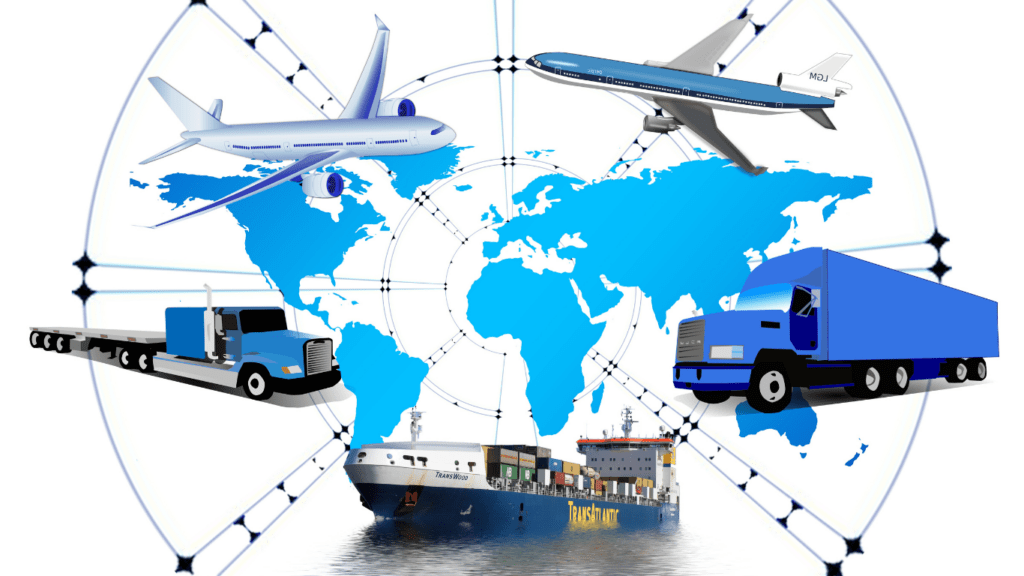The Current State Of Global Supply Chains
Global supply chains face unprecedented disruptions. Key factors include geopolitical tensions, evolving trade policies, and technological advancements. Companies lean toward regional diversification, seeking to mitigate risks linked to overreliance on specific countries, such as the US-China trade dynamics.
Supply chain disruptions impact industries across the board. For example, semiconductor shortages affect electronics and automotive sectors, causing production delays and revenue losses.
Technology plays a dual role in supply chains. Advanced analytics and AI improve efficiency, whereas cybersecurity threats signify potential vulnerabilities that shouldn’t be overlooked. Blockchain adoption grows as a solution for enhanced transparency and traceability.
The pandemic accelerated e-commerce growth, leading to a surge in demand for logistics and warehousing. Logistics companies face increased pressure to adapt swiftly, enhancing last-mile delivery options and integrating real-time tracking systems to meet consumer expectations.
Environmental regulations influence supply chain operations significantly. Companies commit to sustainable practices, reducing carbon footprints and promoting circular economies. These shifts necessitate innovation in materials and packaging to meet ecological standards.
Navigating supply chains demands both proactive strategies and adaptive capabilities to thrive amidst complex global dynamics.
Key Challenges Faced In 2024
Supply chains in 2024 are navigating diverse and complex challenges. These key issues need targeted strategies for effective management.
- Increasing Freight Costs
Freight costs are rising due to several factors. Higher fuel prices and limited carrier capacity are driving expenses up. Contract rates for ocean freight have seen significant increases, particularly from Asia to North America. Additionally, global port congestion is causing delays and further escalating costs. Efficient logistics and strategic partnerships are essential to mitigate these impacts.
- Labor Shortages
Labor shortages are affecting supply chains globally. Workforce deficits in warehousing and transportation sectors are prominent. For example, the US trucking industry faces a shortage of over 80,000 drivers. High turnover rates and an aging workforce contribute to this issue. Investing in automation and offering competitive wages can help address these gaps.
- Regulatory Changes
Regulatory changes are reshaping supply chain operations. New environmental regulations, such as stricter emissions standards, require adaptation. The EU aims to reduce greenhouse gas emissions by at least 55% by 2030, impacting suppliers and manufacturers. Ensuring compliance with evolving regulations demands continuous monitoring and process adjustments.
Strategies For Overcoming Supply Chain Challenges

Adapting to supply chain challenges in 2024 requires a multifaceted approach. Below are key strategies companies can implement to navigate these complexities effectively.
Investing In Technology
Leveraging technology in supply chains enhances efficiency and transparency. Using AI and advanced analytics allows companies to predict demand, identify potential disruptions, and optimize inventory levels. Implementing blockchain technology ensures traceability and authenticity of products. For example, Walmart uses blockchain to track food safety, reducing the time required to trace contaminants from days to mere seconds. Additionally, real-time tracking systems in logistics enable better planning and customer satisfaction.
Building Resilient Networks
Creating resilient supply chain networks involves establishing robust relationships with suppliers and logistics partners. By maintaining strong partnerships, companies can negotiate better terms and ensure flexibility during disruptions. Diversifying geographic locations for warehouses and distribution centers also mitigates risks associated with regional disruptions. For instance, automakers like Toyota distribute their manufacturing plants globally to avoid production halts due to localized issues. Moreover, comprehensive risk management plans covering such:
- natural disasters
- geopolitical tensions
- cyber threats
help maintain continuity.
Diversifying Supply Sources
Relying on a single supplier or region can expose companies to significant risk. By diversifying supply sources, businesses can buffer against supply chain interruptions. For example, electronics manufacturers are increasingly sourcing components from multiple countries to avoid overdependence on a single nation. Engaging with multiple suppliers also fosters competitive pricing and innovation. Furthermore, localizing some supply chain elements reduces lead times and transportation costs, enhancing overall efficiency.
The Role Of Sustainability In Supply Chains
As sustainability becomes increasingly critical, companies are integrating eco-friendly practices into their supply chains. This integration not only meets regulatory requirements but also appeals to the growing segment of environmentally conscious consumers.
Sustainable Sourcing
Sustainable sourcing ensures that materials and products are obtained responsibly. Companies are prioritizing suppliers who commit to ethical labor practices and environmentally friendly operations. For example, many fashion brands are sourcing organic cotton that reduces pesticide use. This approach not only minimizes environmental impact but also enhances brand reputation.
Reducing Carbon Footprint
Reducing the carbon footprint involves actions that lower greenhouse gas emissions throughout the supply chain. Firms are investing in energy-efficient transportation and green warehouses. For instance, Amazon has committed to making 50% of all shipments net-zero carbon by 2030. By adopting electric vehicles, optimizing routes, and using renewable energy sources, businesses can significantly cut emissions.



